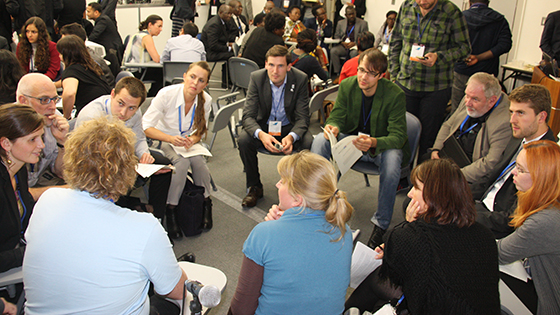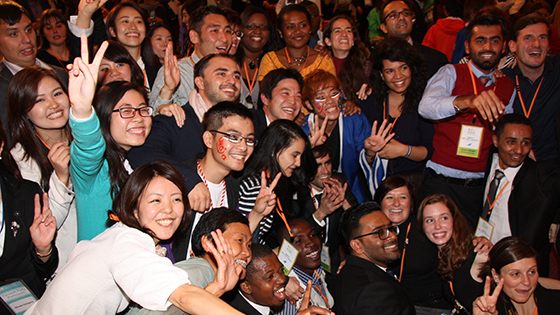
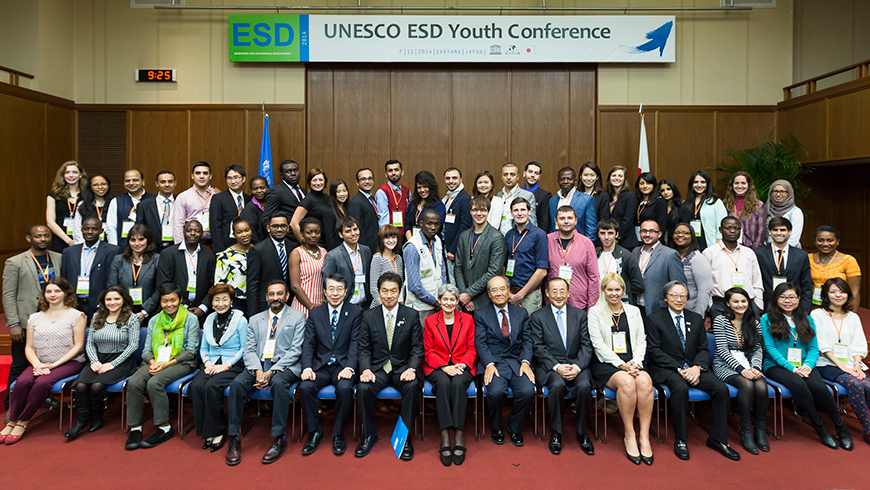
To mark the end of the United Nations Decade of Education for Sustainable Development (DESD, 2005-2014), UNESCO and the Government of Japan hosted a World Conference on Education for Sustainable Development (ESD). During this event, which took place in Aichi-Nagoya, Japan, from 10 to 12 November 2014, participants celebrated a decade of action and set the agenda for ESD beyond 2014. The Conference also launched the Global Action Programme (GAP) on ESD as a follow-up to the DESD.
Before the World Conference, as one of the selected stakeholder meetings that took place in Okayama, Japan, the UNESCO ESD Youth Conference was organized on 7 November 2014 by UNESCO, the Ministry of Education, Culture, Sports, Science and Technology of Japan (MEXT), the Japanese National Commission for UNESCO, Okayama City, and the Goi Peace Foundation. The Youth Conference brought together 50 young ESD leaders between 18-35 years old, who were selected from over 5,000 applicants from 180 countries. They were joined by approximately 50 observers and volunteers, mostly young people from ESD and youth-related organizations in Japan.
The objectives of the UNESCO ESD Youth Conference were:
- To provide a platform for ESD youth leaders from around the world to engage in dialogue and peer learning to enhance their ESD practices.
- To highlight the contributions of youth to the ESD movement, particularly their innovative approaches.
- To formulate collective input and recommendations to the World Conference on ESD in the form of a Youth Statement.
- To promote further youth involvement in ESD and a commitment to actions beyond 2014.
The entire thematic agenda of the Youth Conference was designed to contribute to the overall goal of the GAP: “to generate and scale-up action in all levels and areas of education and learning in order to accelerate progress towards sustainable development.” Special emphasis was placed on one of the GAP’s priority areas—‘empowering and mobilizing youth.’
On 6 November, Pre-conference day, the participants got to know each other through icebreaking and storytelling activities. Then, as a prelude to their discussions on specific ESD themes, they worked in groups to share their visions for a sustainable future, while acknowledging their differences in local circumstances and worldviews.
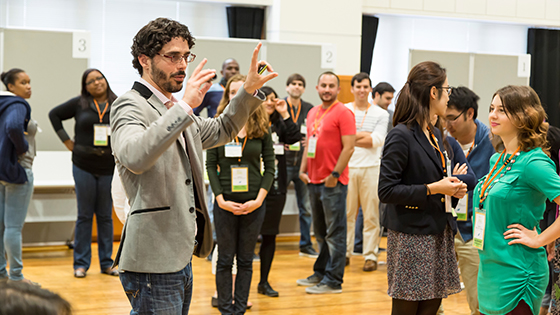
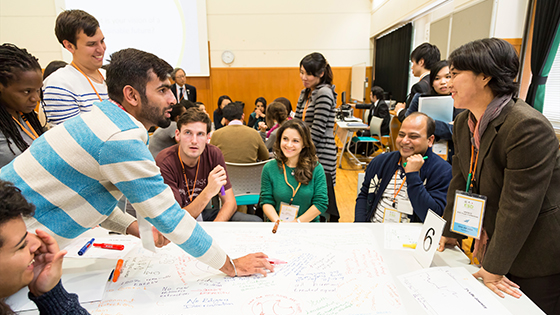
The Conference day (7 November) began with a photo session with the UNESCO Director-General Irina Bokova. In her remarks during the Opening Plenary Session, she empowered the youth by saying: Don’t wait for us. Forge ahead… Young people can lead the world, and I promise you, the world will follow! The keynote speaker, Sally Asker, Director of InSIGHT Sustainability, affirmed the advantage of being young and encouraged the participants to grasp the opportunity to make their collective voice count at the World Conference.
In the Parallel Workshop Sessions, the participants were divided into eight discussion groups according to their expertise and field of activities. The themes of the workshop sessions were: 1) Policy advancement, 2) Whole-institution approaches, 3) Educators and trainers, 4) Innovative learning for youth, 5) Local communities, 6) Sustainability challenges, 7) Social entrepreneurship, and 8) Women and marginalized groups. Each group discussed how ESD actions can be scaled up in the given thematic area, and developed recommendations to be included in the final Youth Statement.
In the afternoon Plenary Discussion Session, the participants further explored how young people can empower and mobilize their own generation as change agents in global, national and local sustainable development processes. The day ended with a comment from each participant sharing their feelings and resolve, with everyone seated in a large circle.
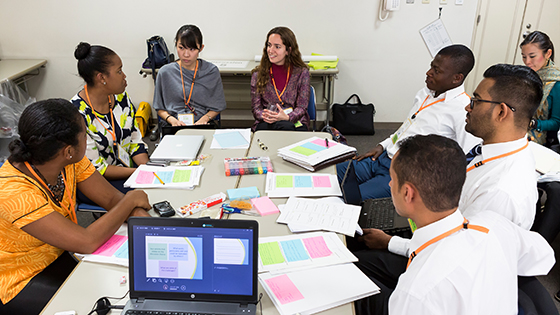
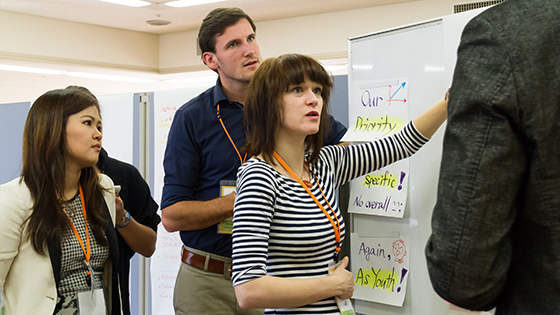
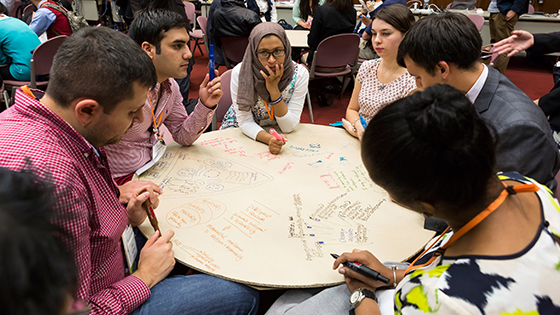
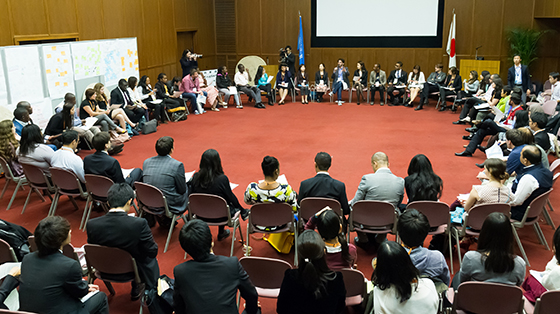
During their stay in Okayama, the youth participants also took part in an Opening Ceremony and a Farewell Party hosted by Okayama City, and enjoyed a day of local sightseeing and cultural experiences.
As an output of the UNESCO ESD Youth Conference, the Youth Statement was adopted and submitted to the World Conference in Aichi-Nagoya to provide young people’s collective recommendations and commitments for advancing ESD beyond 2014. The statement represents the voices not only of the conference participants, but also of the young people from all over the world who joined the pre-conference discussions on UNESCO’s online platform.
The core message of the Youth Statement is that youth should be involved in the planning and implementation of all the areas of the GAP, and that young people themselves are in the best position to empower and mobilize other young people to become change makers. When given the opportunities and support they need, they are ready to take on leadership roles to advance their communities and countries towards sustainability.
After the Youth Conference, the participants actively participated in the World Conference in Aichi-Nagoya, sharing their views and opinions with decision-makers and ESD experts. Through workshop discussions and self-organized events, they made a strong call for youth recognition and intergenerational cooperation.
By the end of the conferences, the youth participants had come up with numerous initiatives and campaigns, and were committed to following up on their discussions and disseminating the youth recommendations to catalyze further commitments and actions worldwide. Most of all, the young ESD leaders forged a strong bond amongst themselves that is sure to continue in different forms of collaboration across borders.
UNESCO ESD Youth Conference Report
Watch the video report
